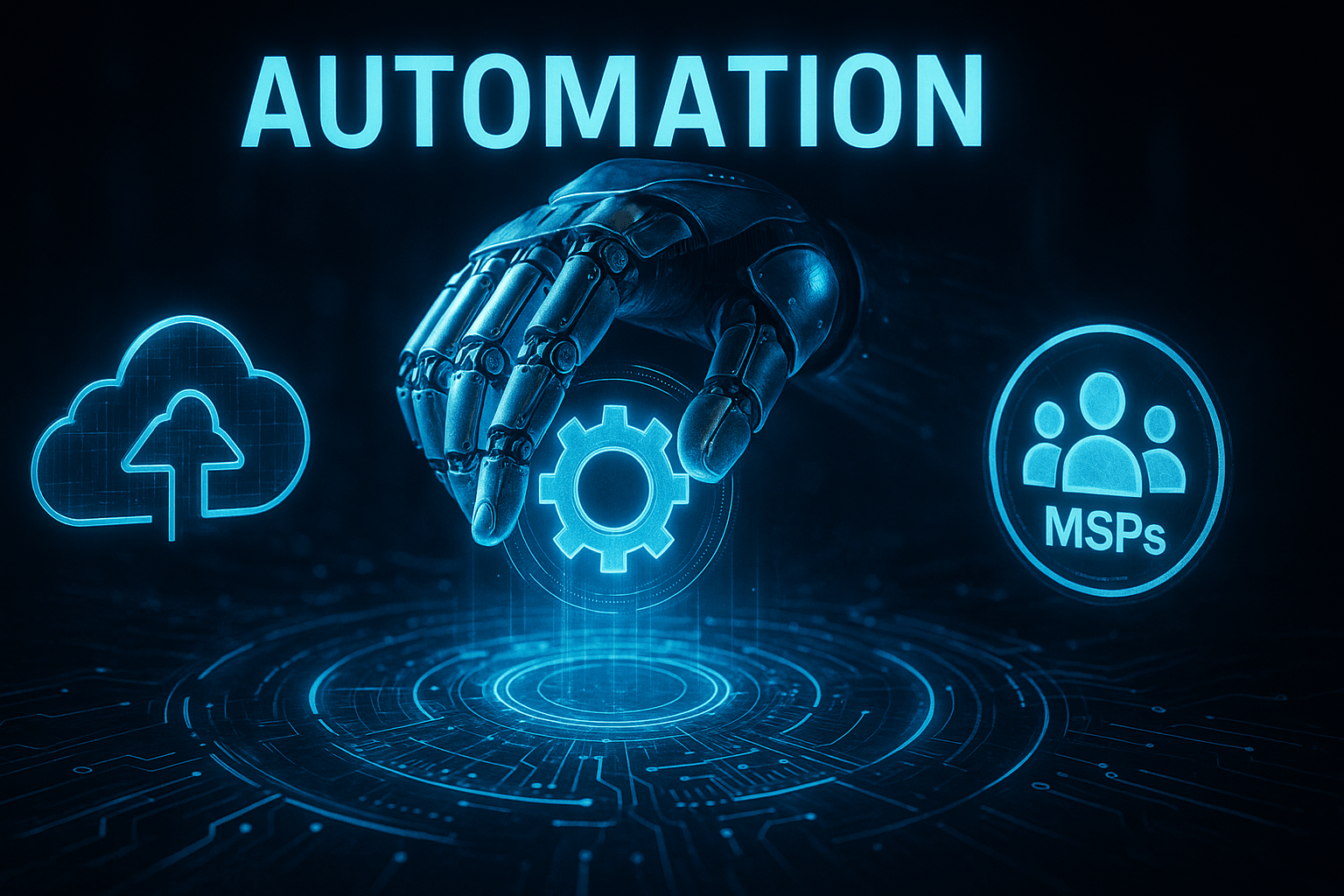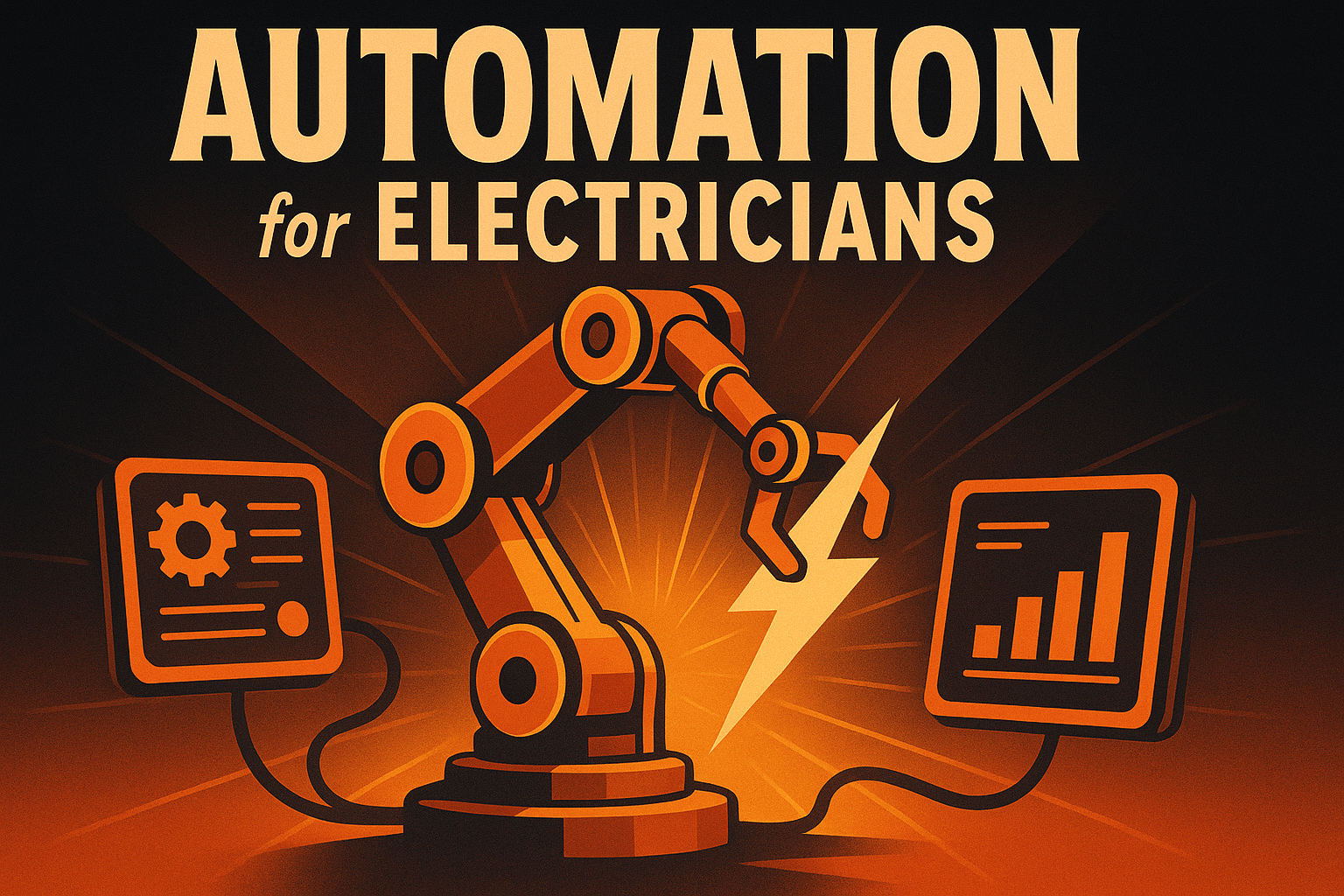IT Services & MSP Automation: Complete Guide to Streamlining Operations & Scaling Revenue
by Design Delulu Editorial · October 7, 2025

Eliminate repetitive tasks, accelerate service delivery, and scale your IT operations without adding headcount through intelligent automation strategies.
For IT services providers and managed service providers (MSPs), the pressure to deliver faster, more reliable support while controlling costs has never been greater. Manual processes that once worked at smaller scales become bottlenecks as your client base grows. Ticket routing delays, repetitive troubleshooting, inconsistent documentation, and time-consuming reporting all drain resources that could be invested in strategic initiatives and revenue-generating activities.
Automation transforms this equation entirely. When implemented strategically, automation reduces average ticket resolution time by 40-60%, eliminates human error in routine tasks, and frees your technical team to focus on complex problem-solving and client relationships. The most successful MSPs use automation not just for efficiency, but as a competitive advantage that enables them to offer superior service levels at better margins while scaling operations predictably. This guide provides the templates, workflows, and measurement frameworks you need to implement automation that delivers measurable ROI from day one.

Why Automation Is Critical for IT Services & MSP Growth
The economics of IT services delivery are fundamentally changing. Clients expect 24/7 availability, faster response times, and proactive monitoring, while pricing pressure remains constant. Traditional labor-intensive service models can't scale profitably in this environment. Automation bridges this gap by handling high-volume, repeatable tasks with consistency and speed that manual processes simply cannot match.
Beyond efficiency gains, automation creates strategic advantages that directly impact your bottom line. Automated ticket triage and routing ensures critical issues reach senior technicians immediately while routine requests are resolved through self-service or junior staff. Automated monitoring and remediation catches problems before clients notice them, transforming your service model from reactive to proactive. Perhaps most importantly, automation provides the data infrastructure needed to make informed decisions about resource allocation, pricing, and service improvements.
Leading MSPs report that automation typically delivers ROI within 3-6 months through a combination of reduced labor costs, increased technician productivity, improved client satisfaction scores, and the ability to take on more clients without proportional staff increases. The question isn't whether to automate, but rather which processes to prioritize and how to implement automation in a way that aligns with your specific service delivery model and client expectations.
Essential Automation Workflows for IT Services & MSPs
Successful automation starts with identifying the highest-impact, highest-frequency processes in your operation. These workflows deliver quick wins that build momentum and demonstrate value to stakeholders while establishing the foundation for more sophisticated automation initiatives.
Ticket Management & Routing Automation
Automated ticket triage analyzes incoming requests using natural language processing and predefined rules to categorize, prioritize, and route tickets to the appropriate team or technician. This eliminates manual sorting time and ensures urgent issues receive immediate attention. Smart routing considers technician specialization, current workload, and SLA requirements to optimize assignments. For common issues, automation can even suggest or implement solutions without human intervention, resolving tickets in minutes instead of hours.
Onboarding & Offboarding Automation
Employee lifecycle management consumes significant technician time but follows predictable patterns ideal for automation. Automated onboarding workflows provision accounts across multiple systems, configure devices according to role-based templates, assign appropriate access permissions, and trigger welcome communications—all from a single trigger event. Offboarding automation ensures security by immediately disabling accounts, revoking access, and initiating equipment recovery processes the moment an employee departure is recorded, eliminating the security gaps that occur with manual processes.
Monitoring, Alerting & Remediation
Proactive monitoring automation continuously tracks system health across your client environment, detecting anomalies and potential issues before they cause downtime. Intelligent alerting filters out noise to surface truly critical events while escalating according to predefined rules. Auto-remediation takes this further by executing predefined fixes for common issues—restarting services, clearing disk space, resetting connections—without human intervention. This dramatically reduces mean time to resolution (MTTR) while allowing technicians to focus on problems requiring human expertise.
Reporting & Documentation Automation
Manual report generation and documentation updates consume hours each week that could be spent on billable work. Automated reporting pulls data from multiple sources to generate client-facing reports, internal performance dashboards, and compliance documentation on predetermined schedules. Documentation automation captures resolution steps from ticket workflows, updates knowledge base articles, and maintains asset inventories in real-time, ensuring your documentation remains current without dedicated effort.

Implementation Framework: From Strategy to Execution
Implementing automation successfully requires a structured approach that balances quick wins with long-term strategic goals. This framework ensures your automation initiatives deliver measurable results while building toward comprehensive operational transformation.
Phase 1: Discovery & Process Mapping
Begin by documenting your current workflows in detail, identifying repetitive tasks, bottlenecks, and error-prone manual steps. Gather input from technicians about which processes consume the most time and cause the most frustration. Analyze ticket data to identify the most common request types and resolution patterns. This discovery phase typically reveals that 20% of your processes consume 80% of manual effort—these high-frequency, high-impact workflows become your automation priorities.
Establish clear success metrics before implementation begins. Define specific, measurable targets for efficiency gains, cost reduction, and quality improvements. Consider both operational metrics (ticket resolution time, first-call resolution rate, technician utilization) and business metrics (client retention, profit margins, capacity for new clients). These baseline measurements provide the foundation for demonstrating ROI and guiding ongoing optimization.
Phase 2: Tool Selection & Architecture Design
Choose automation tools that integrate seamlessly with your existing PSA (Professional Services Automation) platform, RMM (Remote Monitoring and Management) system, and other core technologies. The best automation solution isn't necessarily the most feature-rich—it's the one that fits naturally into your current tech stack and workflows. Consider factors like ease of use, scalability, vendor support, and total cost of ownership when making selection decisions.
Design your automation architecture with flexibility and maintainability in mind. Use modular workflows that can be easily updated as processes evolve. Implement proper error handling and fallback procedures to ensure automation failures don't create worse problems than manual processes. Build in logging and monitoring so you can track automation performance and troubleshoot issues quickly. Good architecture decisions made now prevent technical debt later.
Phase 3: Build, Test & Deploy
Start with pilot projects that deliver visible value quickly while keeping risk contained. Implement automation for one high-volume process, test thoroughly in a controlled environment, and refine based on real-world results before expanding scope. This iterative approach builds confidence, demonstrates value to skeptical stakeholders, and allows you to learn and adjust your approach before investing in more complex automation.
Involve your technical team throughout the build process. The technicians who will work alongside automation understand the nuances and edge cases that can make or break implementation success. Their input improves automation design while building buy-in that ensures adoption. Provide thorough training on new automated workflows, emphasizing how automation makes their jobs easier rather than positioning it as a replacement for human expertise.
Phase 4: Optimize & Scale
Treat automation as an ongoing program rather than a one-time project. Monitor performance metrics continuously, gather feedback from technicians and clients, and refine workflows based on real-world usage patterns. Many automation opportunities only become apparent after initial implementations reveal new bottlenecks or possibilities. Regular optimization cycles ensure your automation continues delivering value as your business and technology environment evolve.
Scale successful pilots to additional processes and client environments systematically. Document lessons learned, create templates and playbooks for common automation patterns, and build a library of reusable components. This approach accelerates future implementations while ensuring consistency and quality across your automation initiatives. As automation matures, explore more sophisticated use cases like predictive maintenance, intelligent resource allocation, and AI-assisted troubleshooting.
Key Performance Indicators & Success Metrics
Measuring automation success requires tracking both efficiency metrics that demonstrate operational improvements and business metrics that show bottom-line impact. Establish baseline measurements before implementation and track progress consistently to demonstrate ROI and identify optimization opportunities.
Operational Efficiency Metrics: Track average ticket resolution time, first-call resolution rate, tickets resolved through automation vs. manual intervention, technician utilization rates, and time spent on repetitive tasks vs. strategic work. These metrics demonstrate how automation improves your team's productivity and effectiveness.
Quality & Reliability Metrics: Monitor error rates in automated processes, SLA compliance percentages, mean time to detection (MTTD) and mean time to resolution (MTTR) for incidents, and client satisfaction scores. Quality metrics ensure automation improves rather than compromises service delivery.
Business Impact Metrics: Measure cost per ticket, profit margins by service type, client retention rates, capacity for new clients without adding staff, and overall revenue per technician. These metrics connect automation investments directly to business outcomes and financial performance.
Adoption & Maturity Metrics: Track the percentage of processes automated, number of workflows deployed, automation usage rates by team members, and time from automation concept to deployment. These metrics help you understand how effectively your organization is embracing automation and where additional training or support might be needed.

Best Practices for Sustainable Automation Success
Long-term automation success depends on approaching implementation strategically while building organizational capabilities that support continuous improvement. These proven practices help MSPs avoid common pitfalls and maximize automation ROI.
Start with pain points, not possibilities: Focus automation efforts on processes that currently cause the most problems or consume the most resources. Technicians and clients will immediately appreciate improvements to frustrating workflows, building momentum and support for broader automation initiatives. Resist the temptation to automate everything at once—prioritize based on impact and feasibility.
Design for exceptions: Every automated process will encounter edge cases and unusual situations. Build clear escalation paths and fallback procedures so automation fails gracefully rather than creating bigger problems. Include human oversight checkpoints for high-risk decisions while allowing automation to handle routine cases independently. Good exception handling distinguishes professional automation from brittle scripts.
Maintain the human element: Automation should enhance rather than replace human expertise and relationships. Use automation to eliminate mundane tasks so technicians can focus on complex problem-solving, strategic consulting, and client relationship building. Clients value responsive, personalized service—automation should enable your team to deliver this at scale, not create impersonal, robotic interactions.
Document everything: Create comprehensive documentation for every automated workflow including purpose, triggers, decision logic, dependencies, and troubleshooting procedures. Good documentation enables team members to understand, maintain, and improve automation over time. It also protects your organization from key person risk if the original automation builders move on.
Invest in training: Provide ongoing education so your team understands both how to work with automation and how to build new automation workflows. Empowering technicians to create and modify automation themselves accelerates improvement cycles and builds organizational capability. Consider certification programs and regular skill-building workshops focused on automation tools and best practices.
Review and refine regularly: Schedule quarterly automation reviews to assess performance, identify optimization opportunities, and prioritize new automation initiatives. Technology and business requirements change constantly—automation that was optimal six months ago may need adjustment. Regular reviews ensure your automation continues delivering maximum value as circumstances evolve.
Frequently Asked Questions
Let’s level up your IT Services & MSPs business
Need services that actually move the needle for IT Services & MSPs? See our approach, pricing, and timelines—then book a quick call.
Additional Resources
- Book Your Automation Strategy Session
Schedule a complimentary 30-minute consultation with our automation specialists to discuss your specific challenges, explore customized automation opportunities, and receive a preliminary roadmap tailored to your MSP's service delivery model and growth objectives.
- View Our MSP Automation Portfolio
Explore real-world case studies showcasing automation implementations for IT services providers and MSPs, including detailed results, ROI metrics, and client testimonials demonstrating measurable improvements in efficiency and profitability.
- Access Free Automation Resources
Download our comprehensive toolkit including automation readiness assessment templates, workflow documentation frameworks, ROI calculators, implementation checklists, and process mapping guides designed specifically for IT services providers and managed service providers.
Related Reading

Discover how automation for electricians streamlines scheduling, invoicing, lead tracking, and customer follow-ups to boost revenue and efficiency. Get started today.

Discover how automation streamlines furniture & home decor operations with GA4 tracking, attribution modeling, and data-driven dashboards. Get your 90-day implementation roadmap.
